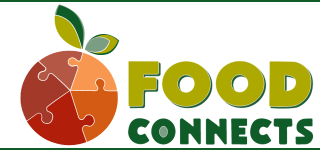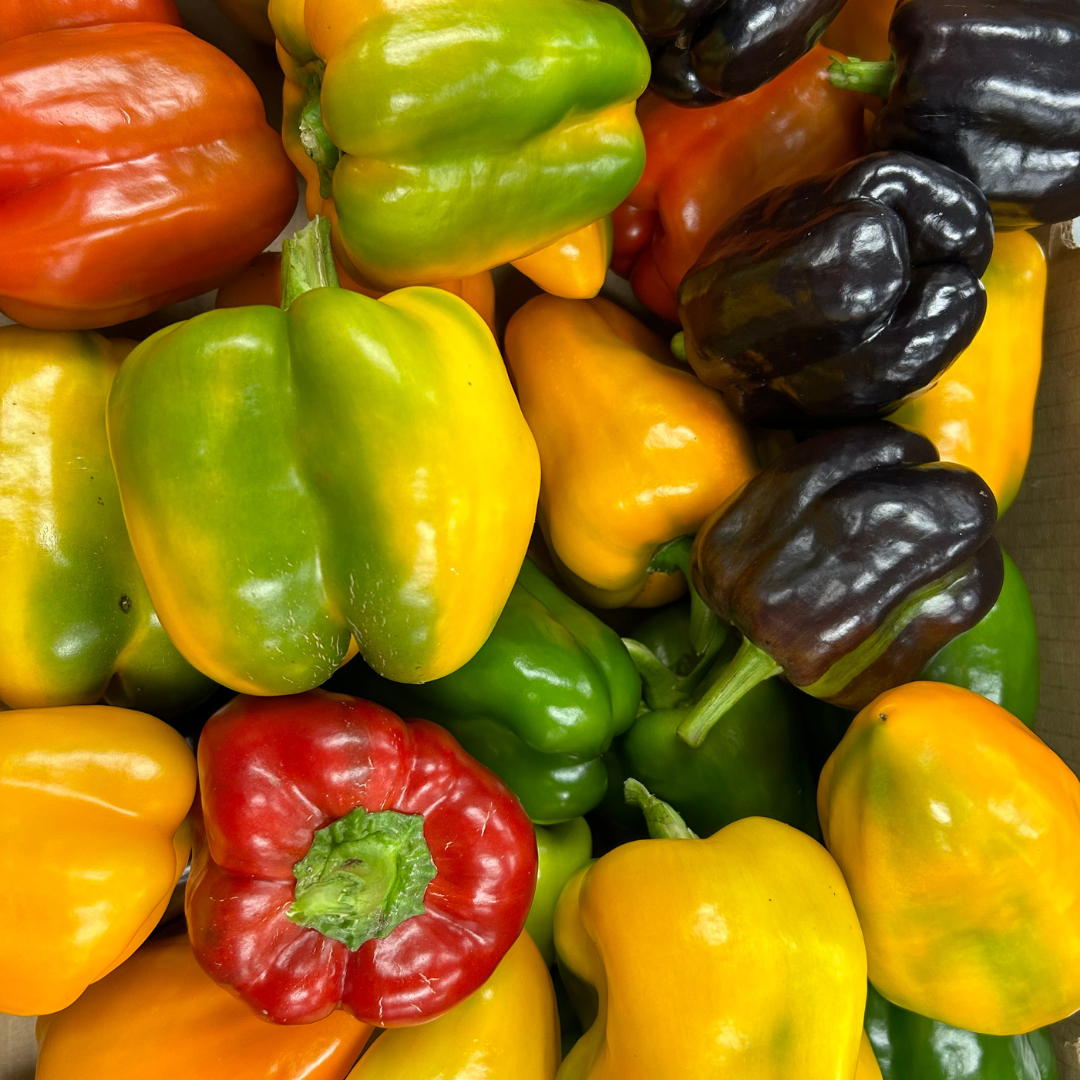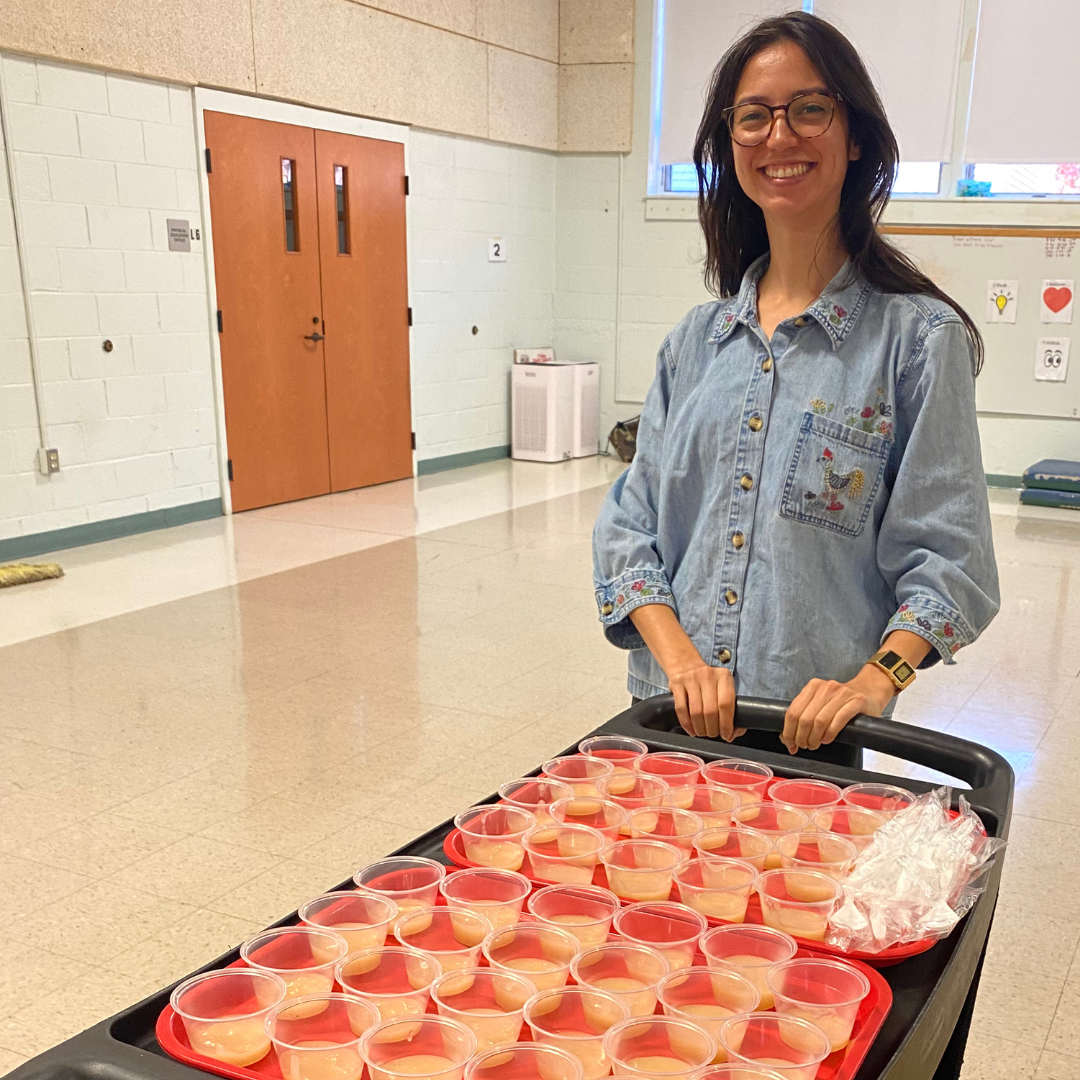Walking into the cafeteria, the first thing you see is larger-than-life-sized posters of the School Nutrition Site Manager, Linda Kinney, beaming over trays of food with her kitchen in the background. Then, looking down and to the right, a framed, shiny golden star hangs on the wall, proudly announcing “Local Food Champion: Serving over 25% Vermont food from Vermont farms.” Glimpsed through the doorway, Ms. Linda, as she is known to the students, puts the finishing touches on school lunch for today.
Principal Laura Hazard addresses a group of students in the cafeteria. “On Morning Announcements, you all heard me say we were going to do a taste test today. Does anyone remember what we were going to try?” Forty three children, kindergarteners, 1st graders, and 2nd graders, shout back: “Applesauce!”
This is how Saxtons River Elementary School began its first taste test of 2024. Also called a Try (as in, “try this”), the taste tests have a friendly, relaxed energy. Watching the call and response, back and forth, between Principal Hazard and her students, I couldn’t help but smile.
Principal Hazard asked questions about local apples and applesauce. “What colors can applesauce be? Do you add sugar? What might an apple sauce with green apples taste like? Have you ever made apple sauce at home?” She also added some fun facts. For example, did you know apples are a good source of vitamin C?
Kids almost levitated off their seats, reaching their arms as high into the air as they could, hoping to get called on to answer these questions. Many students had made applesauce at home with their families. Eager to share their experiences and their knowledge, 6 and 7 year olds loudly announced stories of apple picking, funny colored apple sauce, and their favorite varieties of apple. Some nodded emphatically or exclaimed “ooh yeah!” as Principal Hazard named certain familiar-to-them apple varieties. Memories of fun times apple picking or cooking with their families floated into the cafeteria, filling the room with energy and excitement.
Conjuring up images of fun times with their families while students ate food in their school cafeteria transformed the lunch experience. Kids were eating with smiles on their faces. Happy, sing-song voices shared apple-related stories with the classmates sitting next to them.
Preparations for the Applesauce Try began long before the students entered the cafeteria.
The summer before school began, Principal Hazard shared that she wanted to feature Vermont’s Harvest of the Month more prominently this year. Principal Hazard, Linda, and the Farm to School coach from Food Connects met a few times and planned a series of Tries. Each Try would feature the Harvest of the Month as a main ingredient. Making a little announcement, paired with a small sample of a new food, would give students an opportunity to try something new without committing to a whole tray-full of it.
Principal Hazard knew that students would be more likely to try a new food if they were guided through the experience. Back when the cafeteria started serving new breakfast bars, no students ventured to eat them. Not knowing what was in them, or what they tasted like, students were hesitant to crack open the packaging. One day, Principal Hazard turned down the lights to get students’ attention, talked a bit about the breakfast bars, and then gave small samples for the students to try. After that, students started taking the bars! Imagine if we could do this for each vegetable and fruit featured in Vermont’s local Harvest of the Month program.
This effort fits in a larger movement within WNESU to incorporate more local food, to the benefit of the students and local food producers.
Unlike most school districts, Windham Northeast Supervisory Union schools serve local, bulk milk from Miller Farm in VT, a new collaboration with WNESU and NOFA Vermont. Not only does the soda-fountain style dispenser cut down on waste, but I have heard from multiple sources that the milk tastes amazing. Each student, aged 5 - 7, skipped, shuffled, hopped, and twirled toward their lunch tables with a tall cup of local milk wobbling precariously on their tray.
Local food, which has traveled less miles, helps Saxtons River’s lunch stand out. The food itself looks fresh and appetizing. Children walked out of the serving line carrying dark green trays with crisp-looking green beans; fluffy, bouncy crusted pizza; and juicy crescents of cantaloupe with the rind still on. No wonder Ms. Linda is so well-liked by the students.
Before we handed out the little cups with yellow apple sauce, students turned toward Linda and in a chorus shouted, and I mean shouted, “Thank you, Ms. Linda!” Principal Hazard reminded students, “Ms. Linda made this apple sauce herself, so that means it’s even better because we know she is such a good cook.” Riotous applause and admiration poured forth from the students (I’m not joking). They knew they were in for a treat. As students were lining up to clear off their trays, one student leaned over to me and whispered, “I ate it [the applesauce] slow, so that I could keep eating it.”




































































